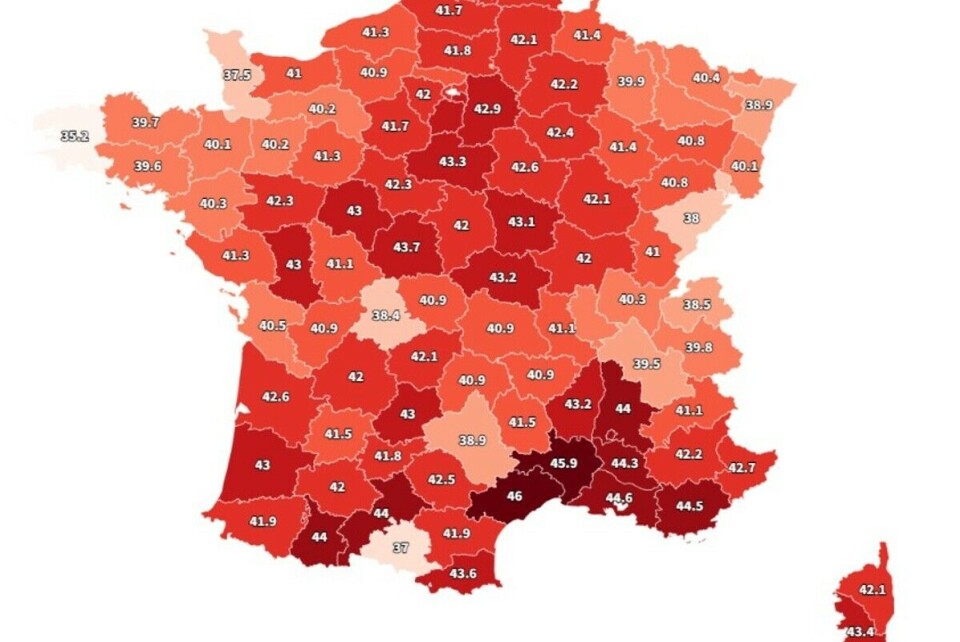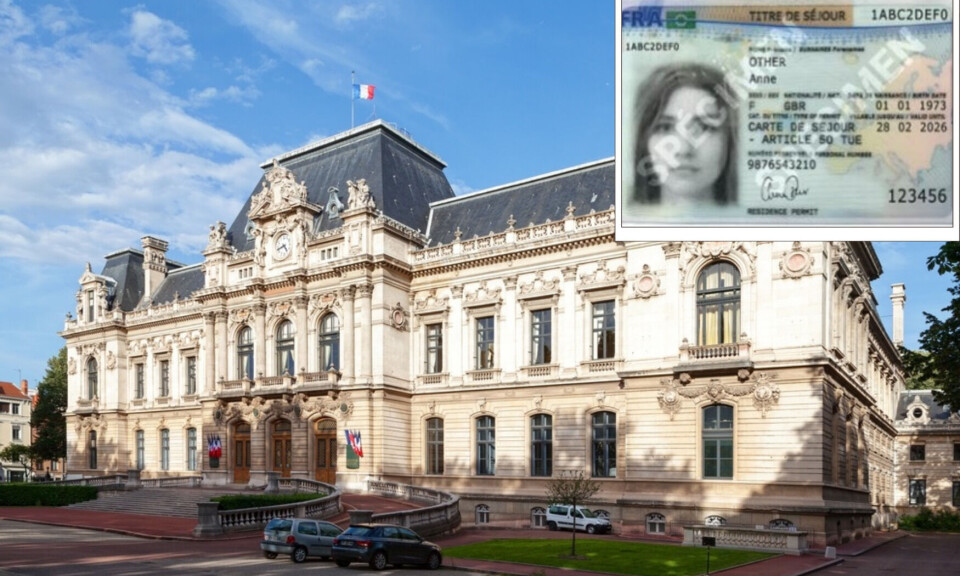-
Why it is going to get much warmer in France this week
Temperatures will be above the seasonal average and could reach 22C in some places
-
Floods, fires, and drought: ‘Shock’ France climate change report
The report warns that coastal cities could disappear and major cities could be uninhabitable in summer
-
All of France on alert for heat danger on anniversary of 2003 tragedy
Weather warnings have been raised for every region with the potential risk to over-75s stressed
Map: What is the highest temperature recorded in your part of France?
We look at records across the country as the current heatwave continues

As the south of France continues to swelter in a heatwave, we look at the temperature records for each French department.
Where are the maximum temperature records?
The data, released by Méteo France in 2022, shows France’s highest temperatures were recorded in the following departments:
- Hérault, at 46C on June 28, 2019, in Vérargues
- This was closely followed by Gard, 45.9C, also on June 28, 2019, in Gallargues-le-Montueux.
Almost as high were Bouches-du-Rhône (44.6C), Var (44.5C), Vaucluse (44.3C), Drôme (44C), andPyrénées-Orientales (43.6C), all of which hit their maximum on the same date: June 28, 2019.
Other significant peaks were recorded in Hautes-Pyrénées (44C), whose record stands since August 1, 1945. Also above 40C were: Haute-Garonne (44C), Landes (43C), Corse-du-Sud (43.4C) and Ardèche (43.2C).
Although not confirmed by Méteo France, temperatures in Haute-Corse reportedly hit 42.8C on Tuesday (July 18), higher than the record of 42.1C, set in 1983. There were also reports of the mercury exceeding 40C in Ariège, which would also be a new record.
It is worth noting in which conditions the temperature recordings are taken. Méteo France always takes them in the shade, several centimetres above the ground and sheltered from the wind.
Where were the ‘lowest’ maximum temperatures?
The ‘lowest’ maximums were found in:
- Doubs, at 38C, on July 25, 2019, in Pontarlier
- Haute-Vienne, 38.4C, on July 23, 2019, in Saint-Yriex-la-Perche
- Manche, at 37.5C, on July 23, 2019, in Saint-Hilaire-du-Harcouët
- Finistère, at 35.2C on July 12, 1949, in Brest
What is the current situation?
Nine departments are on a Météo France orange alert (the second-highest level) for a heatwave on Wednesday (July 19) and Thursday (July 20).
They are: Hérault, Gard, Vaucluse, Var, Bouches-du-Rhône, Alpes-de-Haute-Provence, Alpes-Maritimes, Haute-Corse, and Corse-du-Sud.
🟠🌡️ En ce mercredi, 9 départements du Sud-Est de la France sont toujours placés en #vigilance orange #canicule.
— VigiMétéoFrance (@VigiMeteoFrance) July 19, 2023
➡️ Dans cette zone, les températures dépasseront les 35 °C, atteignant souvent les 36/38 °C, avec jusqu'à 40 degrés dans le Var.
➡️ Infos : https://t.co/CSYEovTI83 pic.twitter.com/DsfgMi2rQp
Météo France has said that these nine departments are likely to see temperatures of above 35C, reaching up to 36-38C, and as high as 40C in Var. Nighttime temperatures on Wednesday, are set to remain very high, with lows between 22 and 26C, it said.
It warned that these temperatures “require particular vigilance, especially for people who are sensitive or at risk”.
What qualifies as a heatwave in France?
The term “heatwave” in English is applied more generally to any period when temperatures feel higher than usual.
In France, meteorologists will declare a “canicule” if temperatures exceed expected levels for the time of year during the day and stay high at night for a period of at least three consecutive days or more.
The temperature thresholds depend on the region. Paris would be classed as being in the midst of a canicule if the temperature is higher than 31C during the day and 21C at night for more than three days, but in Marseille this label would only be applied for highs of 36C and 24C.
Another reason for the lack of fixed canicule temperatures is that certain meteorological conditions can make the air feel hotter and more humid than it actually is, increasing the effect on the general public.
Related articles
Heatwave in southern France set to intensify in coming days
France heatwave tips: How to sleep, keep cool and stay healthy
Tips on how to stay cool in France’s heatwave
























